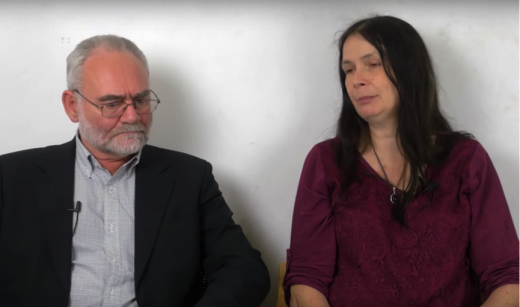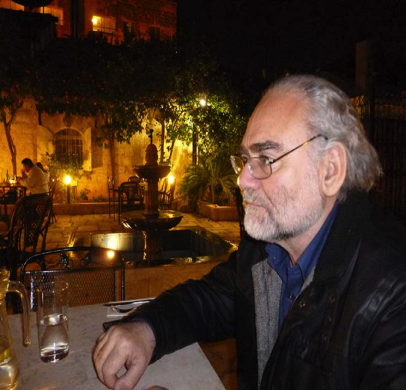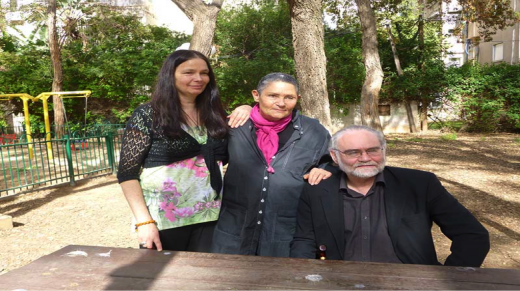Sometimes you hear a message that stops you in your tracks. You have an experience that shows you how good human beings can be.
Many people have this feeling when listening to Jo Berry talking about building bridges for peace. Whilst is possible to summarise her story, it is the power of her own words that reaches people’s hearts.
Below is an introduction to her story that is taken directly from the Building Bridges For Peace website. You can discover more via the following link.
http://www.buildingbridgesforpeace.org/
Later we will look at Patrick Magee’s contribution to this remarkable work, but first here are Jo’s words.
On October 12th 1984 my father, Sir Anthony Berry and 4 others were killed in the bombing of the Grand Hotel, Brighton as they attended the Conservative Party Conference.
I made a personal decision just two days later, to bring something positive out of this emotionally shattering trauma and to try and understand those who had killed him.
I chose to give up blame and revenge, instead taking responsibility for my pain and feelings, transforming them into passion for peace. The journey of healing began with my intention and I trusted that life would then bring me the opportunities to heal and grow.
Two months later I randomly shared a taxi with a young Irish man whose brother had been in the IRA and had been killed by a British soldier.
We should have been enemies but instead we talked about a world where peace was possible and where there were no enemies. As I left the taxi, I had a flash of inspiration, this was one way I could make a difference, I could build a bridge across the divide.
The hardest bridge to build was with Patrick Magee, who was sentenced for his part in planting the Brighton bomb and released as part of the Good Friday Peace Agreement in 1999.
I made enquiries from mutual friends and finally met Pat for the first time in November 2000 at a friend’s house in Dublin.
My intention was to hear his story so that I could experience him as a human being rather than a faceless enemy. I was scared and had doubts, but the strongest part of me needed to see him and speak to him.

I asked him many questions and shared a little about my Dad. At first he began to express his political perspective, which though I was familiar with was hard to hear but I could see he was a sensitive and intelligent person.
Then something changed. He stopped talking and said he didn’t know who he was any more, he wanted to hear my anger, my pain and what could he do to help.
It was as if he had taken off his political hat and had now opened up and became vulnerable. The conversation was very different after that and a new journey started, one which we are still on.
He now had a need to meet me and rediscover his lost humanity. When he planted the bomb he was not seeing human beings in the hotel, they were just a means to an end.
During our meetings, he began to develop the awareness that he had killed a human being with a soul, someone he could have sat down and had a cup of tea with.
He would later say that he was disarmed by the empathy I gave him, that he would have found it easier if I had met him shouting, blaming and defending my position. I wasn’t there to argue my point; I was there to listen and experience his humanity.
After three hours I could not talk any more and ended our meeting by thanking him for his willingness to engage with me so honestly and he said he was sorry he had killed my Dad…
Patrick Magee brings courage and humility to the process of building bridges for peace. Here is an extract from his story. You can discover more via the following link.
http://www.buildingbridgesforpeace.org/about-building-bridges-for-peace/dr-patrick-magee/
I was released from prison in 1999, having served 14 years under the terms of the Good Friday Agreement. Whilst in prison I completed a PhD examining the representation of Irish Republicans in ‘Troubles’ fiction.
It was important for me as part of the peace process in North of Ireland to recognise that now we should engage with former enemies and political opponents, addressing the needs and grievances of victims, helping to break down differences by explaining ourselves to the other.
For 27 years I was a committed member of the IRA, whether on active service, on the run or in prison. I spent a total of 17 years either interned or sentenced because of my involvement.
A crucial part of that legacy is the need to look back over the conflict and to understand it in terms of the many conflicting perspectives. That will entail ensuring that many voices previously excluded or misrepresented must now be heard, including the voices of the victims.
In that light, as an individual, I agreed to meet Jo. Her father, Sir Anthony Berry had been killed, along with four others, in the IRA’s attack on the Grand Hotel. I had planted the bomb.
So, on the day, I was there to explain, in essence to justify, the armed struggle; and specifically ‘Why Brighton’. I was wearing a political hat. We talked for three hours. But something happened during that first encounter.
Pat Magee in Jerusalem whist giving talks with Jo Berry, 2013
Jo’s openness, calmness; her apparent lack of hostility – in fact her willingness to listen and to try to understand, disarmed me. Had Jo instead shown anger, however justifiable, it would for me have been easier to cope with.
The political hat would have remained firmly attached. But in the presence of such composure and decency, as I said, I felt disarmed. It was a cathartic moment.
It didn’t matter that as a former member of the IRA I could politically justify my past actions in terms of the legitimacy of the struggle.
As an individual I carried the heavy weight of knowing I had caused profound hurt to this woman.
I expressed a need to really hear what she had to say and to help her come to terms with her loss, if that were possible:
‘I want to hear your anger, to hear your pain.’
A political obligation henceforth became a personal obligation. I now realised more fully that I was guilty of something I had attributed to the other: that our enemies demonised, dehumanised, marginalised, reduced us.
In agreeing to meet me that first occasion and in continuing to meet me she has demonstrated a truly admirable, strength and purpose in her endeavour to try to make sense of her loss and her preparedness to listen to my perspective.
No matter what we can achieve as two human beings meeting after a terrible event, the loss remains. Neither forgiveness nor understanding can fully embrace that loss.
The hope lies in the fact we continue to meet in order to further this mutual process towards understanding.
Jo Berry and Pat Magee with Robi Damelin
from Parents Circle – Family Forum in Tel Aviv
Building Bridges For Peace has a clear vision. Below is an excerpt from its website that gives an introduction to the organisation’s aims.
Our Vision
We believe:
- in a world where the humanity of everyone is respected and acknowledged
- that everyone has a voice and deserves to be listened to
- in a world where conflict can be resolved non violently
- in a world where behaviour can be challenged without demonising the person
Our Mission
- To inspire through the example of the Founders story
- To further the public relationship between Jo Berry and Patrick Magee
- To seek to understand fully the roots of violence and conflict
- To raise awareness that non violence is a global movement
- To promote non violence as a viable response to violence, terrorism and war
- To create opportunities for all people to be heard
- To establish ways to resolve conflict in which no-one is hurt
- To educate on conflict transformation
- To advocate the importance of emotional safety
- To facilitate dialogue between those affected by conflict
- To inform on the alternatives to blame
- To empower those who believe they do not have a voice
- To support other peace initiatives
Our Aims
We will establish a programme of four missions a year over the next three years in response to invitations already received from local peace organisations in conflict and post-conflict areas to work in partnership with us.
We will build on the reconciliation work that we have been doing with our partners in Northern Ireland.
We will directly influence government and policy makers to devote more resources to non-violent conflict resolution, and support our partner organisations to do the same.
We will support other similar pairings of people previously on opposite sides who wish to work together to promote peaceful conflict resolution.
Jo and Pat embody the famous Mahatma Gandhi phrase that is highlighted on their website. This is:
We must be the change we wish to see.
Let’s return again to Jo’s story. The following words summarise some of the key themes in the work of Building Bridges For Peace. Jo says:
I passionately believe that there is humanity in everyone, and every time we demonise the “other” we are delaying the onset of peace in this world.
Once we find our own humanity, and we see the humanity in the other, then we are going to want them to have their human rights, their good housing, food, medicine, education and freedom to be themselves, to be safe and secure.
We will want for them all what we want for ourselves. Peace happens when we treasure everyone, all creatures, our land, our planet, and work together to find solutions in which everyone wins.




[…] B is for Building Bridges For Peace […]